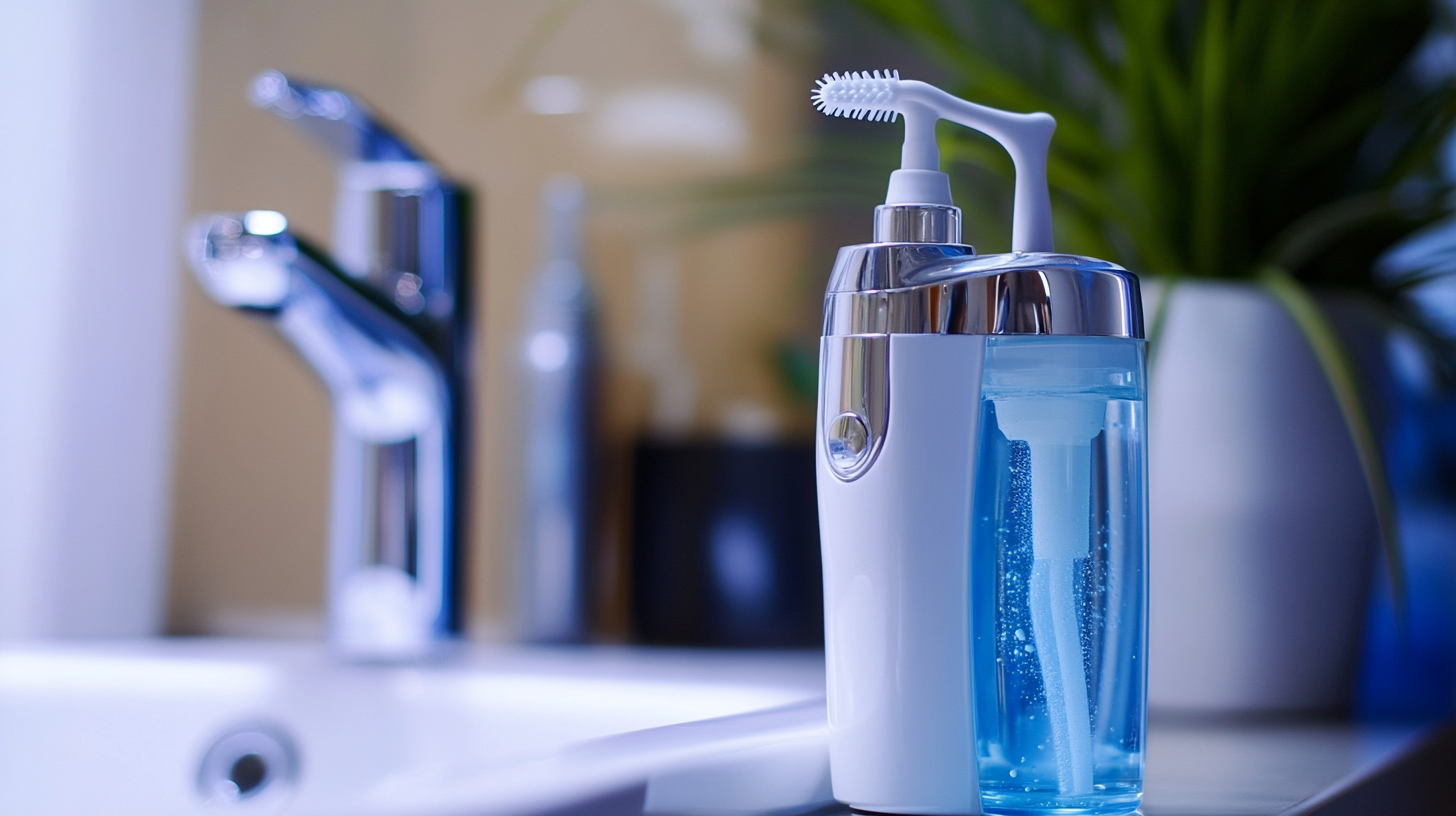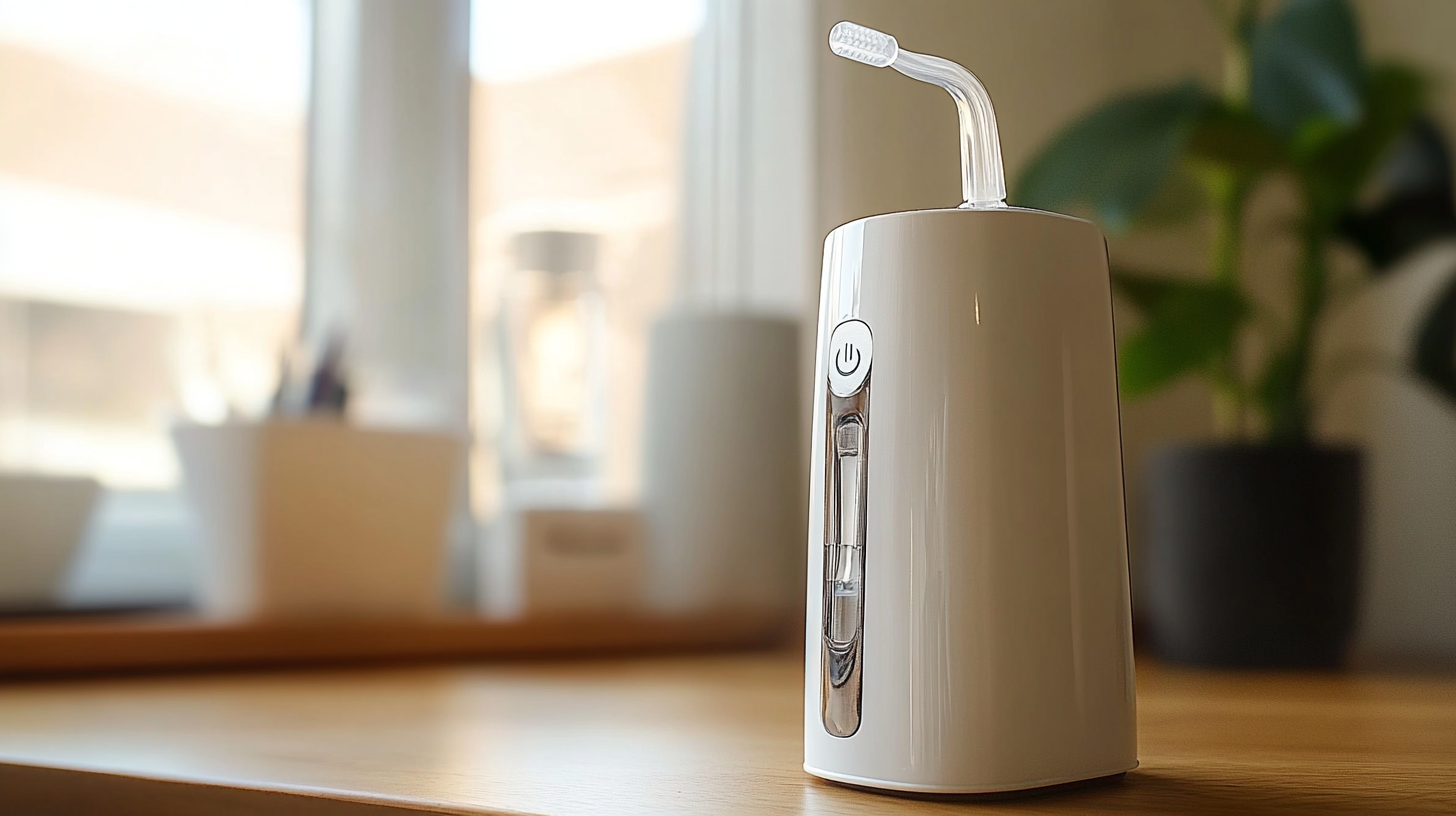Unlocking the Power of Best Oral Irrigator Detailed Specifications and Usage Guide for Buyers
In an age where oral hygiene is paramount to overall health, the oral irrigator emerges as a revolutionary tool designed to enhance our daily dental care routines. This blog unlocks the power of the best oral irrigators available on the market, providing you with detailed specifications and an insightful usage guide tailored for discerning buyers. Whether you are a dental hygiene enthusiast or someone looking to improve your oral health, understanding the features and benefits of various oral irrigators can be crucial in making an informed decision.

From powerful pulsating jets that flush out food particles to user-friendly designs that cater to all ages, this comprehensive guide dives deep into the top strategies for selecting the right oral irrigator for your needs. Join us in exploring how this innovative device can transform your dental care regimen and ultimately promote a healthier smile.
What to Look for When Choosing the Best Oral Irrigator for Your Needs
When choosing the best oral irrigator for your needs, it’s essential to consider several key factors that can greatly enhance your oral hygiene routine. First and foremost, assess the irrigation pressure settings. Adjustable pressure allows you to customize the intensity according to your comfort level and oral health conditions. For those with sensitive gums, a lower setting may be more beneficial, while individuals with braces or implants might require higher pressure to effectively remove plaque and debris.
Next, evaluate the type of water reservoir and its capacity. A larger reservoir means longer usage time without frequent refills, which can be especially advantageous during family use or for those who like extended cleaning sessions. Additionally, check for available tips and attachments. Some oral irrigators come with specialized tips designed for specific dental needs, such as periodontal pockets or orthodontic care, which can provide a more comprehensive cleaning experience. By focusing on these factors, you can unlock the true potential of an oral irrigator to meet your unique dental care requirements.

Comprehensive Breakdown of Oral Irrigator Specifications: What They Mean
When selecting the best oral irrigator, understanding the specifications is crucial for making an informed choice. Oral irrigators, also known as water flossers, harness the power of pulsating water to remove plaque and food debris from between teeth and below the gumline. According to a 2021 report by the American Dental Association, studies show that oral irrigators can reduce gingivitis by up to 93% when used in conjunction with traditional brushing and flossing routines. Therefore, examining features such as water pressure settings, flow rate, and nozzle types becomes essential for identifying a device's effectiveness.
One key specification is water pressure, measured in PSI (pounds per square inch). Most high-quality oral irrigators offer adjustable pressure settings, ranging from 10 to 100 PSI, allowing users to customize their cleaning experience based on individual sensitivity and specific dental needs. Additionally, a study published in the Journal of Clinical Dentistry highlights that oral irrigators with multiple tip designs, including orthodontic and plaque seeker tips, can effectively target different areas of the mouth, enhancing overall oral health.
By understanding these specifications, buyers can unlock the full potential of oral irrigators and achieve better dental hygiene outcomes.
Step-by-Step Guide on How to Use an Oral Irrigator Effectively
Using an oral irrigator can significantly enhance your oral hygiene routine, making it easier to remove food particles and plaque that traditional brushing might miss. To start, fill the reservoir with lukewarm water or your favorite mouthwash for a refreshing experience. It's crucial to select the appropriate pressure setting; beginners should start with a low setting to avoid discomfort. Position the tip of the irrigator in your mouth, leaning over the sink to catch any excess water.
Next, guide the tip along your gum line, pausing briefly between teeth to ensure thorough cleaning. Aim the water stream slightly beneath the gum line to help flush out debris. Move steadily around your mouth, spending more time on areas that are more prone to plaque buildup, such as the back teeth. Once you finish, rinse your mouth and the irrigator tip thoroughly. Remember, consistency is key; integrating this step into your daily routine will yield optimal results for healthier gums and a brighter smile.
Unlocking the Power of Best Oral Irrigator Detailed Specifications and Usage Guide for Buyers
| Model | Water Pressure (PSI) | Tank Capacity (oz) | Battery Life (hours) | Weight (lbs) | Nozzle Tips Included |
|---|---|---|---|---|---|
| Model A | 40-90 | 22 | 10 | 1.5 | 3 |
| Model B | 30-80 | 16 | 8 | 2.0 | 4 |
| Model C | 40-100 | 25 | 12 | 1.8 | 2 |
| Model D | 50-110 | 20 | 15 | 2.5 | 5 |
| Model E | 20-70 | 10 | 6 | 1.2 | 1 |
Tips for Maintaining Your Oral Irrigator for Longevity and Optimal Performance
Maintaining your oral irrigator is essential for ensuring its longevity and optimal performance.
 Firstly, regular cleaning is crucial. After each use, detach the reservoir and flush it with clean water to remove any leftover solution or debris. Once a week, consider washing the reservoir and tip in warm, soapy water, and rinse thoroughly. This helps prevent the buildup of bacteria, ensuring the device remains hygienic and effective.
Firstly, regular cleaning is crucial. After each use, detach the reservoir and flush it with clean water to remove any leftover solution or debris. Once a week, consider washing the reservoir and tip in warm, soapy water, and rinse thoroughly. This helps prevent the buildup of bacteria, ensuring the device remains hygienic and effective.
Another key aspect of maintaining your oral irrigator is to regularly check and replace the tips. Over time, the nozzles can wear down or become less effective, leading to reduced performance. Most manufacturers recommend changing the tips every six months, but be sure to follow the specific guidelines for your model. Additionally, ensure the power cord and water hose are undamaged, as any wear could impact functionality. Proper storage is also important—keep the device in a dry area and avoid exposing it to extreme temperatures or humidity. By following these simple maintenance tips, you can enjoy the full benefits of your oral irrigator for years to come.
Common Mistakes to Avoid When Using an Oral Irrigator for Dental Hygiene
When it comes to dental hygiene, using an oral irrigator can be an effective addition to your routine, but many users make common mistakes that can undermine its benefits. According to the American Dental Association, oral irrigators can reduce gingivitis by up to 93% in six months when used correctly. However, improper technique can lead to ineffective cleaning or even gum irritation.
One of the most frequent errors is using the wrong pressure setting. Many users mistakenly assume that higher pressure equals better cleaning. In reality, starting with a lower setting is often more effective and can help users gradually adjust. Additionally, failing to position the tip correctly can result in missed areas of plaque buildup. Always ensure the tip is directed towards the gum line for optimal results.
Tips:
- Begin with a low pressure setting and increase gradually as you become more comfortable.
- Focus on the gum line by angling the tip appropriately.
- Rinse your mouth and the irrigator tip thoroughly after each use to maintain hygiene.
By avoiding these common mistakes and utilizing best practices, you can maximize the benefits of your oral irrigator, contributing positively to your overall dental health—a crucial aspect emphasized during the National Love Teeth Day campaign.
